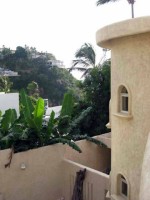Scuba Diving & Snorkeling in Acapulco
Explore Underwater Wonders: Scuba Diving & Snorkeling in Acapulco
Acapulco, with its crystal-clear waters and vibrant marine life, is a dream destination for anyone wanting to explore the world beneath the waves. Whether you’re a seasoned diver or a first-timer looking to snorkel, Acapulco offers diverse underwater experiences for all levels. From colorful coral reefs to underwater statues, the area provides a unique opportunity to discover ocean life like never before.
Best Scuba Diving & Snorkeling Spots in Acapulco
La Roqueta Island
One of the most famous spots for both scuba diving and snorkeling in Acapulco is La Roqueta Island. Located just off the coast, this small island is known for its beautiful underwater landscape, including vibrant reefs and hidden coves. Here, divers and snorkelers can explore crystal-clear waters filled with colorful fish, rays, and sea turtles. The underwater statues at La Roqueta are a unique feature, adding an extra layer of wonder to the experience. These statues are part of a conservation effort to enhance marine biodiversity and attract divers.
The Acapulco Bay
For those who prefer staying close to the city, Acapulco Bay offers several opportunities to explore its calm, shallow waters. The bay is home to several dive sites, with rocky formations and a variety of marine life. While it may not have the same dramatic reefs as other locations, the bay offers easy access and great visibility, making it perfect for beginners or those looking for a relaxing dive.
Playa Barra Vieja
Located further south of the city, Playa Barra Vieja is a lesser-known but fantastic spot for snorkeling and diving. The area is home to abundant marine life, including tropical fish, rays, and occasional dolphin sightings. Its calm waters make it a great place for those who want to enjoy the ocean without venturing too far from shore.
Puerto Marqués
Another great option for diving and snorkeling is Puerto Marqués, a serene bay surrounded by cliffs and lush vegetation. Here, divers can explore rocky formations and encounter a variety of marine species, from colorful fish to marine turtles. The area is also perfect for those who enjoy a more peaceful dive away from the crowds.
How to Dive & Snorkel in Acapulco
Whether you’re an experienced diver or a beginner, diving and snorkeling in Acapulco is easy to do. Here’s how you can get started:
Snorkeling
Snorkeling is an easy and accessible way to experience the underwater world. No special training or certification is needed, and it’s a perfect option for those who want to get a glimpse of the marine life without committing to a full dive. Most dive shops offer snorkeling gear rental and guided tours to the best spots.
Scuba Diving for Beginners
For those interested in scuba diving, there are plenty of opportunities to learn and explore the waters of Acapulco. Many local dive operators offer introductory courses for beginners, such as the Discover Scuba Diving program. This program usually includes a short briefing on diving safety and equipment, followed by a shallow dive in a controlled environment, such as a beach or calm bay. It’s an excellent way to get a taste of the underwater world without requiring a full certification.
Getting Certified in Acapulco
If you want to go deeper, you can take a full PADI Open Water Diver course, which is the most common entry-level certification for scuba diving. This certification allows you to dive to a maximum depth of 18 meters (60 feet) and can take anywhere from 3 to 4 days to complete, depending on the course schedule.
The training includes theory lessons, confined water training, and open water dives. The cost for an Open Water Diver course typically ranges between $300 - $450 USD, depending on the dive school and the level of service offered.
Advanced Diving and Specialty Courses
For those who already have their Open Water certification, Acapulco offers a variety of advanced diving and specialty courses, such as deep diving, night diving, or underwater photography. These courses typically take 2 to 3 days and give divers the opportunity to expand their skills and explore more challenging dive sites.
Scuba Diving in Acapulco: What You Need to Know
What’s Involved in Learning to Dive
If you’re new to scuba diving, you’ll start with a theory class, where you’ll learn basic concepts like dive tables, equipment use, and safety procedures. Then, you’ll practice skills in shallow water before making your first open-water dive. During this dive, you'll be accompanied by an instructor who will guide you step by step.
How Long Does It Take?
Introductory (Discover Scuba Diving): Usually half a day (4 hours), including a briefing, shallow dive, and gear training.
Open Water Diver: Takes 3 to 4 days to complete, with pool training, theory lessons, and 4 open-water dives.
How Many Dives Do You Need?
For an introductory course, only one dive is needed after the briefing. However, for the Open Water Diver course, you will need to complete four open-water dives to get certified.
Cost of Scuba Diving in Acapulco
Discover Scuba Diving: Prices typically range from $80 - $150 USD for a half-day experience.
Open Water Diver Certification: $300 - $450 USD for the full course.
Guided Dives: Guided dive trips can cost around $60 - $100 USD per dive, depending on the location.
Tips for Scuba Diving in Acapulco
- Safety First: Always dive with a certified guide and ensure you understand the dive site, current conditions, and safety procedures.
- Stay Hydrated: Diving can be physically demanding, so make sure you drink plenty of water before and after your dive.
Respect Marine Life: Acapulco’s underwater world is home to delicate ecosystems. Always avoid touching or disturbing marine life, and be cautious of your buoyancy to avoid damaging the reef. - Check Your Equipment: Before heading into the water, double-check all your gear to make sure everything is functioning properly.
- Know Your Limits: Always dive within your comfort zone and stick to the depths and dive times that are appropriate for your certification level.












